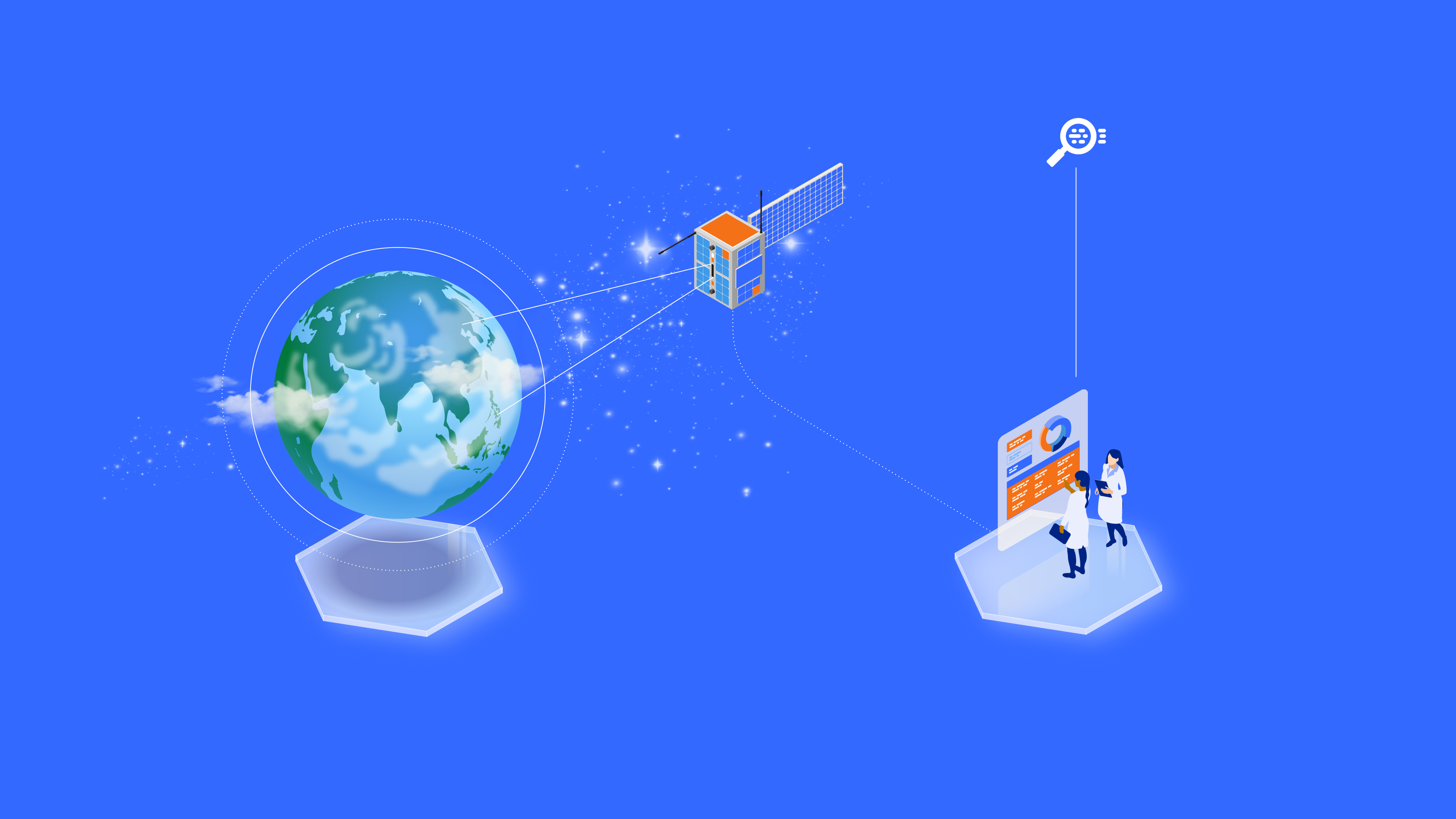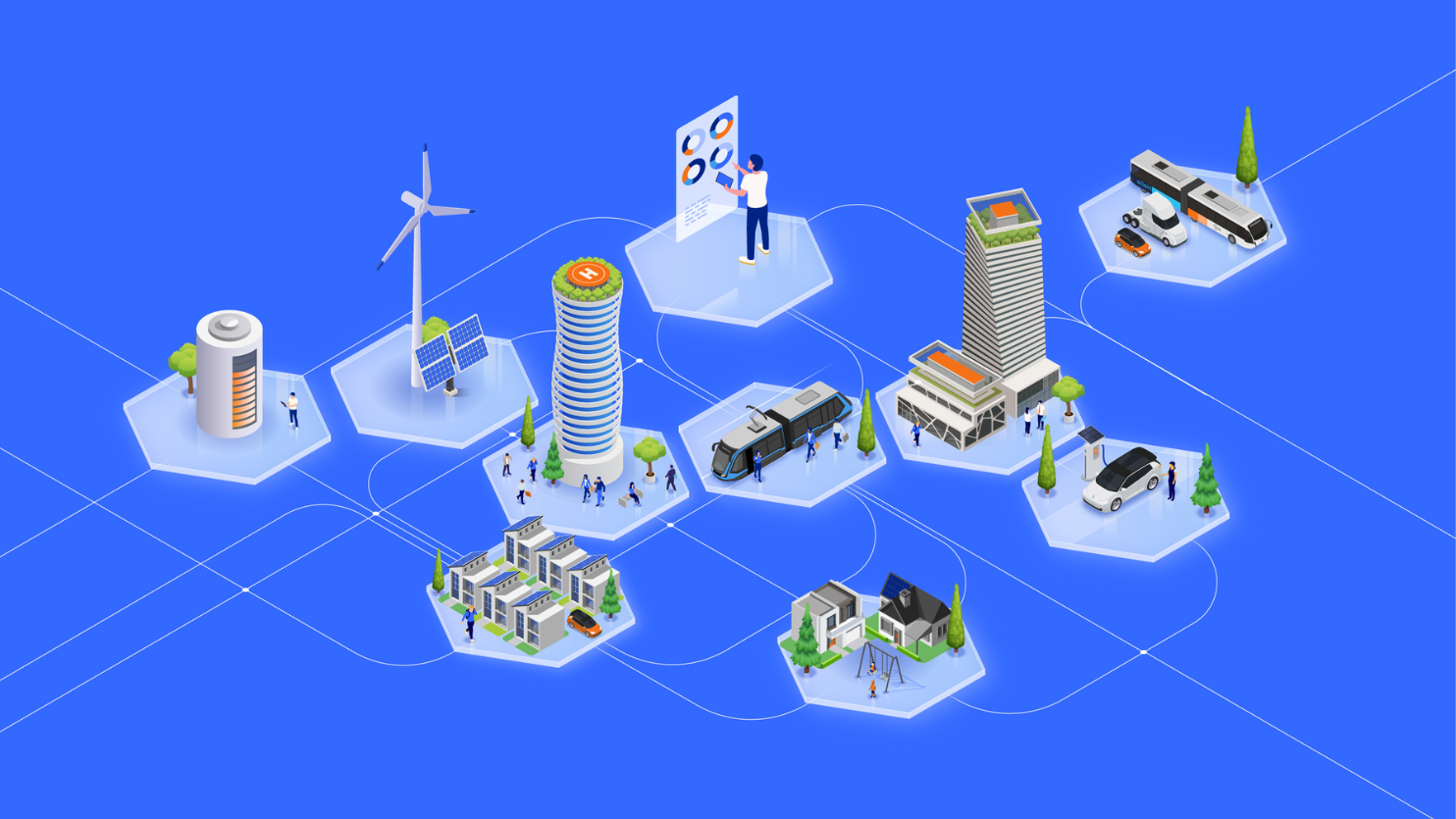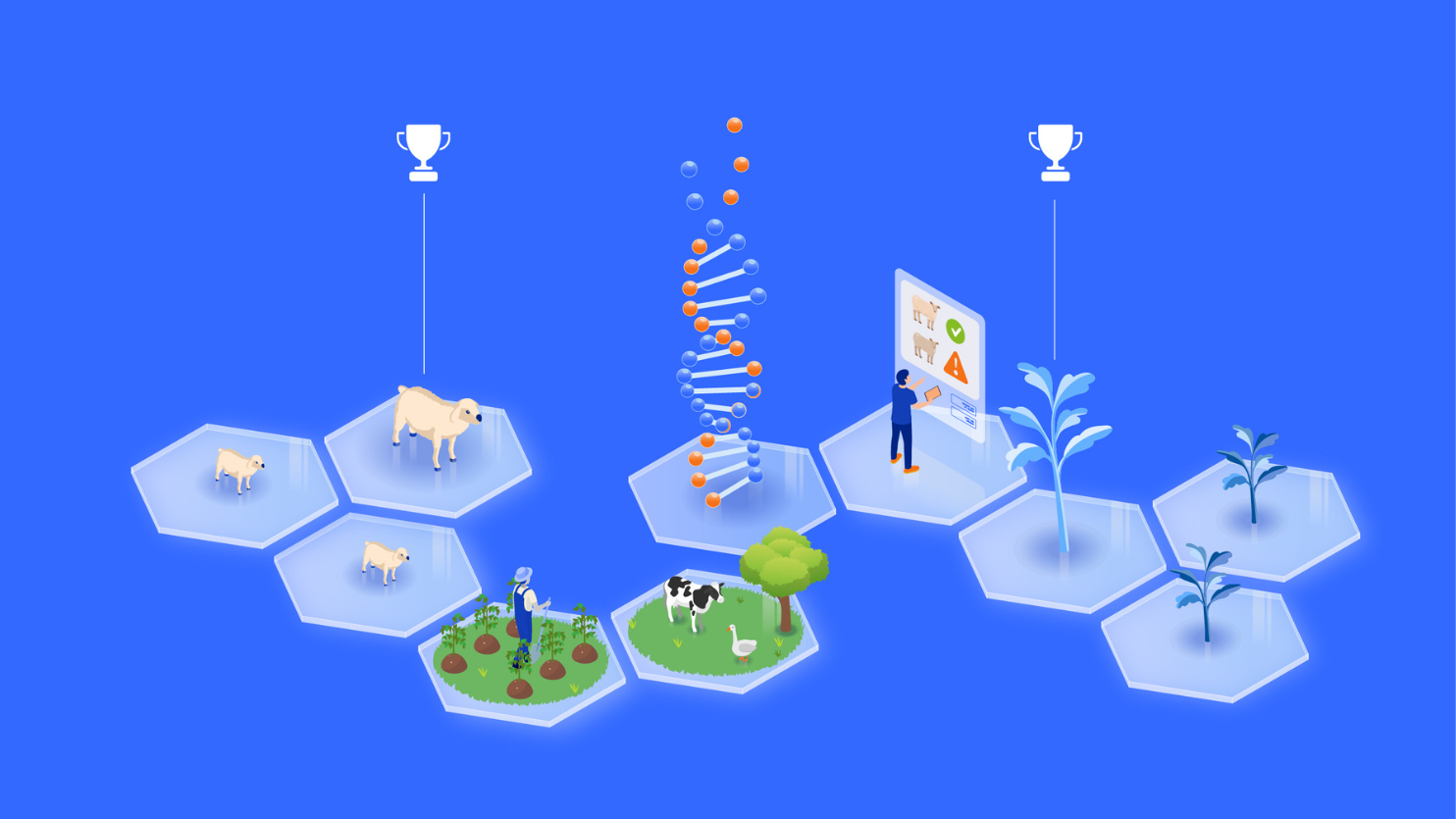
Quantum application lab (QAL)
Quantum computing can radically change how your organisation tackles computational problems, potentially leading to a significant competitive advantage. At the Quantum Application Lab (QAL), organisations can develop quantum computing applications through R&D collaboration.
At the Quantum Application Lab (QAL), we address today's challenges with tomorrow's solutions using quantum technology. Partners gain a realistic understanding of the possibilities and limitations of quantum computing. We work on tailored technological solutions and reduce investment risks through collaborative research and development.
The QAL offers new methods to model and optimise complex systems. This can result in faster and more accurate solutions, lower costs, or fundamentally new applications.
We engage in strategic explorations, the development of use cases, and (software) integration or implementation projects. Our partners gain a realistic view of the capabilities and limitations of quantum computing technologies for applications in optimisation, simulation, machine learning, and more.
The QAL makes quantum computing accessible to various sectors, from agriculture to energy, and from the financial sector to healthcare. Quantum applications help organisations solve their most complex problems and discover new opportunities.
Read the use cases below from the QAL and discover how your organisation can also benefit from quantum computing.
Quantum Applications for Aerospace
In the aerospace sector, quantum computing is used for various applications, including aircraft simulations, logistical optimisation, improved aerodynamic properties, and the development of materials that make components stronger, lighter, or more resistant to corrosion.
Problem: At Air France KLM, more than 7,000 employees work in shifts with different contract percentages, skills, and authorisation levels. Efficiently scheduling all these employees is a complex task. Traditionally, this is solved by designing basic and personal schedules, which reduces efficiency.
Solution: Quantum annealing is used to find the global minimum in a function, supporting and improving the scheduling processes. This technique is suitable for optimisation problems such as crew scheduling. By formulating the problem as a Quadratic Unconstrained Optimisation (QUBO) problem, we found solutions using quantum annealing, hybrid annealing, and simulated annealing.
Result: Quantum annealers achieve nearly optimal schedules, while hybrid solvers outperform both methods. In the future, quantum annealing can generate optimal schedules (with more variables) that comply with regulations, preferences, and operational needs more efficiently than traditional methods.
This work is supported by the Dutch National Growth Fund (NGF) as part of the Quantum Delta NL programme.
Problem: Bathymetry is the study of water depths, conducted by S[&]T using remote sensing data. This is important for the Dutch Ministry of Defence to gather useful intelligence. They use it, for example, to determine possible landing sites for amphibious vehicles or the presence of sandbanks. The depth of the ocean floor between 0 and 20 metres is derived from large amounts of multispectral satellite data using advanced machine learning algorithms. These data, consisting of 13 spectral bands with a temporal resolution of 5 days and a spatial resolution between 10 and 60 metres, result in an enormous amount of data that becomes unmanageable for classical methods.
Solution: Quantum neural networks can achieve high accuracies with small amounts of data because quantum machine learning algorithms can generalise well with little data. The challenge is loading large datasets onto a quantum processor. To make optimal use of quantum hardware, classical dimensionality reduction was applied to reduce the high spectral dimensionality of the available data. The data were then embedded in a variational quantum classifier to classify them into depth intervals.
Result: The quantum algorithm was executed on a 4-qubit simulator and tested on real multispectral data near the Mediterranean Sea. The classical results were reproduced with a quantum classifier. Measuring water depth more accurately with less data is beneficial for climate monitoring, resource exploration, and navigation.
Problem: Pulsar detection is a complex task in radio astronomy, involving the processing of vast amounts of data to locate these distant cosmic beacons. Together with ASTRON, we aim to refine the detection and analysis of pulsars, thereby enriching our cosmic knowledge. This is a massive task, partly due to undetectable cosmic phenomena.
Solution: This project leverages quantum computing to accelerate and improve the analysis of astronomical data. Two methods are central: a variational one-qubit classifier and a Variational Quantum Linear Solver (VQLS). The one-qubit classifier simplifies data categorisation, aiding in the rapid identification of potential pulsars. The VQLS, available on QAL's GitHub, offers a new approach to solving linear systems of equations for image reconstruction, a common challenge in pulsar data analysis, with improved efficiency and scalability through quantum computing.
Result: The application of quantum computing in pulsar detection can significantly reduce data analysis times and potentially reveal previously undetectable cosmic phenomena. The signal processing pipeline consists of many computationally intensive steps. The introduction of variational classifiers and VQLS in various parts of this pipeline lays the foundation for profound discoveries in the field.
Problem: In this presentation, we considered two problems: 1) Producing efficient personnel rosters that satisfy various constraints and preferences, and 2) Quantifying the impact of ad campaigns. The rostering problem is notoriously difficult, with constraints imposed by the flight schedule, the work force including different types of contracts, and agreements such as collective labor agreements. The goal is to find a roster that is as good as possible while meeting as many constraints as possible. The difficulty of the ad campaign impact is that ideally one wishes to compare revenue with and without the ad campaign. However, only one of the two typically is available. Predicting the impact of the revenue without the ad campaign is possible based on matching time series from other sources. Choosing the most fitting time series is hard.
Solution: For the rostering problem, a hybrid quantum annealing approach was used. The problem was formulated as a mathematical optimization problem. The hybrid quantum annealer broke the formulation in smaller pieces, solved each of the smaller subproblems and then reconstructed the overall solution. The work for A/B testing is still ongoing. So far, quantum computing seems to help in better feature selection (which leads to better time series) and quantum Boltzmann machines that better process the selected time series.
Result: Improved rosters that better satisfy the operational requirements are in general cheaper. Additionally, rosters that satisfy the personnel needs tend to result in happier workforce, contributing to a vital organization. Better prediction of the impact of ad campaigns helps in better spending the advertising budget, resulting in a stronger financial position.

Problem: Methane is a potent greenhouse gas with a 100-year global warming potential about 30 times greater than CO₂, and is responsible for roughly 30% of today’s global temperature rise. More than 60% of emissions are human-made, yet current monitoring is hindered by incomplete, fragmented, and uncertain data. Reconciling diverse data sources is therefore critical to achieving accurate and actionable methane inventories. Classical Earth observation approaches use low-resolution but frequent Sentinel-5P imagery to flag possible methane plumes, which are then analysed in higher-resolution Sentinel-2 images. Deep learning models, such as U-Nets, segment plumes and enable inversion for leak locations and emission rates. While effective, these methods remain computationally demanding and often struggle with the scale, heterogeneity, and uncertainty of global data.
Solution: This applied research project investigates whether quantum computing can offer advantages for methane monitoring. Two complementary angles are explored: a top-down approach to detect new leaks and a bottom-up approach to update emission inventories.
Benefits: The goal is to accelerate large-scale models, integrate heterogeneous datasets, and improve methane emission estimates at higher resolution.

Quantum Applications for the Energy sector
More efficient electrical energy systems, better batteries, cleaner fertilisation, and lower emissions can be achieved through the optimisation capabilities and computational power of quantum computing.
Problem: Alliander is expanding the capacity of their network over the next 10 years by an amount comparable to the past 100 years. New technologies such as solar panels and electric vehicles add extra complexity to the electricity network. Together with QAL, Alliander is exploring the feasibility of quantum computing for optimising the robustness of energy networks in the event of cable failures, known as the 'N-1 problem'.
Solution: Three quantum computing solutions were investigated: amplitude amplification, quantum annealing, and Gaussian Boson Samplers. These methods utilise quantum parallelism and adiabatic evolution to efficiently monitor network reconfigurations and connectivity after cable failures.
Result: Tests showed that quantum computing has the potential to verify the robustness of large systems, which is unmanageable with current classical computers.
This work is supported by the Dutch National Growth Fund (NGF) as part of the Quantum Delta NL programme.
Problem: Toyota Motor Europe is collaborating with QAL on photocatalysis for water splitting, a crucial process for sustainable hydrogen production. Accurately simulating these reactions is complex and requires innovative computational methods.
Solution: The project uses an advanced quantum algorithm, the state-averaged orbital optimisation variational quantum eigensolver (SA-OOVQE), to simulate the energy interactions in photocatalysis. This algorithm enables accurate and efficient modelling of complex processes, providing deep insights into the interactions during photocatalysis.
Result: The use of SA-OOVQE in photocatalysis offers significant advantages. It improves the accuracy of simulations and provides deeper insights into reaction mechanisms, accelerating the research and development process. Simulations were conducted on a quantum simulator, and with further collaboration and hardware development, we expect to simulate increasingly larger systems.
Problem: Rapid economic growth, energy transition, and digitalisation in the Netherlands have led to increased electricity consumption. New offices, factories, residential areas, data centres, electric vehicles, and heat pumps demand more energy. Alliander seeks ways to improve the performance of their grid analysis and simulations, as traditional methods are no longer sufficient. Key tasks include performing power flow analysis and state estimation, which are computationally intensive.
Solution: Alliander uses quantum computing to accelerate their calculations. A crucial part is reordering matrices to improve the efficiency of calculations. This is done using a quantum algorithm that solves problems through Quadratic Unconstrained Binary Optimisation (QUBO). This approach has been tested on several practical datasets and has shown promising results.
Result: Accelerating these calculations helps quickly identify weak points in the grid and predict future energy needs. This is crucial for ensuring grid stability, maintenance, upgrades, and preventing outages, thereby guaranteeing a reliable and efficient electricity supply.

Problem: Detection of cables above ground and selection of the right cable in an open ditch is hard and time-consuming. Delays and the damaging of cables can be the result, additional to dangers being associated to cutting the wrong cable. Current devices cannot distinguish between medium-voltage and low-voltage cables, cannot detect current above ground, and always need an additional signal to do cable selection or detection.
Solution: Quantum sensors may help in tackling these challenges. They are extremely sensitive and can combine several measurement modalities such as DC/AC magnetic fields, vector magnetic fields, temperature and electric field.
Result: The project helped Alliander to gain a better understanding of the magnetic signatures of their cables, which is needed for better identification. Additionally, a field test is being planned to address on of the current shortcomings in cable selection/detection.
Quantum Applications for Agriculture
In agriculture, quantum computing is used for better understanding of complex natural processes. Examples include food production, crop productivity, and resilience. It is also used in quantitative genetics. Machine learning and AI play a significant role in these applications.
Problem: Genomic selection improves future generations by breeding animals or plants with desired traits. This process, which uses DNA markers and characteristics, promises higher yields, better quality, disease resistance, and sustainability. Together with researchers from Wageningen Livestock & Research (WLR), we are developing algorithms to tackle the computational challenges of large and complex datasets.
Solution: Researchers from QAL and WLR have developed randomised algorithms for singular value decompositions (SVD). These methods reduce the dimensionality of datasets, speed up calculations, and maintain accuracy. Quantum-inspired selection techniques focus on the top 5% with the highest genetic value, reducing inefficiency. Tools such as truncated SVD and Halko's algorithms significantly shorten computation times.
Result: This approach optimises genomic predictions, shortens the identification time of valuable individuals, and improves breeding programmes. This contributes to food security, biodiversity conservation, and more sustainable agriculture.
This work is supported by the Dutch National Growth Fund (NGF) as part of the Quantum Delta NL programme.

Quantum Applications for Healthcare
Quantum computing can simulate larger, more complex molecules. This can shorten the time for drug development and extend the effective patent period.
Problem: Radiotherapy requires precise Fluence Map Optimization (FMO) to maximize tumor irradiation and minimize healthy tissue damage. Conventional FMO faces computational challenges with increasing number of variables and voxel size. The multi-objective nature of FMO yields a Pareto front of optimal solutions, necessitating exploration of novel computational tools like quantum computing for potential improvements.
Solution: This study explored quantum annealing for FMO. Quantum annealers use quantum mechanics to navigate complex optimization landscapes, potentially faster than classical methods. FMO was reformulated as a Quadratic Unconstrained Binary Optimization (QUBO) problem for compatibility with quantum hardware. Simulated annealing, which was executed on classical hardware, served as a benchmark. FMO formulations were varied (beam angles, resolution, organs at risk, voxel count) to assess quantum solution efficiency.
Benefits: Quantum annealing feasibly solved a simplified FMO problem (with one organ at risk and three beam angles). More complex FMOs were solvable with simulated annealing. Now, a significant gap exists between the current capabilities of quantum annealers (limited to simplified FMO formulations) and the stringent requirements for clinical FMO application; therefore, while feasibility was shown, scalability and benefits of quantum solutions need more research.

Quantum Applications for Finance
In the financial sector, quantum computing helps with optimised portfolio management and more effective analysis of large or unstructured datasets. This has powerful applications in capital markets, corporate finance, and encryption-related activities.
Problem: Organisations use portfolio analysis to examine how their business activities and investment or stock portfolios contribute to their results. For optimal risk and return distribution, scenarios are calculated and compared with objectives. As more variables are added or the analysis period is extended, these scenarios become more complex. This can lead to a large problem that is difficult to calculate or needs to be simplified, potentially resulting in suboptimal analysis.
Solution: TNO, together with Rabobank, investigated whether quantum computing can help optimise loan portfolios. In this case, financial objectives of the global loan portfolio in the agriculture sector were combined with environmental and sustainability goals. "We wanted not only a traditional analysis of revenue, profit, and return, but also to see the impact of our portfolio on the Paris climate goals," says Mischa Vos of Rabobank. The problem was reformulated as a Quadratic Unconstrained Binary Optimisation (QUBO) problem. Two QUBO formulations were presented, each with a different focus.
Result: Mischa Vos: “The result pleasantly surprised us. We quickly had an analysis that can serve as a basis for future decisions.” Frank Phillipson of TNO was also satisfied: “This practical example shows the potential of quantum computers.” Vos adds: “The board decides, but Rabobank wants to contribute to the 2035 climate goals. Our portfolio plays a crucial role in this. What do we invest in and what do we not?”
Read more about the results in this article and see how quantum computing can tackle complex optimisation problems in the financial sector. It also highlights the potential of quantum computing for more efficient and robust portfolio analyses. Or watch the video.
Quantum Applications for Semiconductors
The semiconductor industry is looking at quantum computing for materials discovery, process optimisation, defect detection, and chip design. Quantum computing in factories can be used to optimise complex processes, production scheduling, and logistics.
Problem: “EUV Lithography machines have fundamental plasma challenges that reduce the quality of the machine’s performance and can even form a limit on how many high-quality chips can be produced worldwide.
Solution: ASML and TNO collaborate to explore how quantum computing solutions can improve the understanding of the EUV challenges and ameliorate their impact on lithography machines.
Result: By using quantum algorithms to improve the simulation of plasma physics inside machines, we can contribute to more durable machines, and better wafer yields.”

Quantum Applications for Logistics and Supply Chain Management
Quantum algorithms can be used to optimise routing, planning, and risk management. Additionally, they can improve processes with digital twins.
Collaborate in the Quantum Application Lab
Could quantum computing be the solution to your challenge? Develop quantum computing applications for your organisation together with TNO in the Quantum Application Lab. Want to know more? Contact us.
Get inspired
Province Noord-Brabant, TNO and partners join forces on cybersecurity


Cybersecurity by design: our vision


Industrial Product Security


Secure Public Sector IT Systems


Cybersecure Energy Systems


